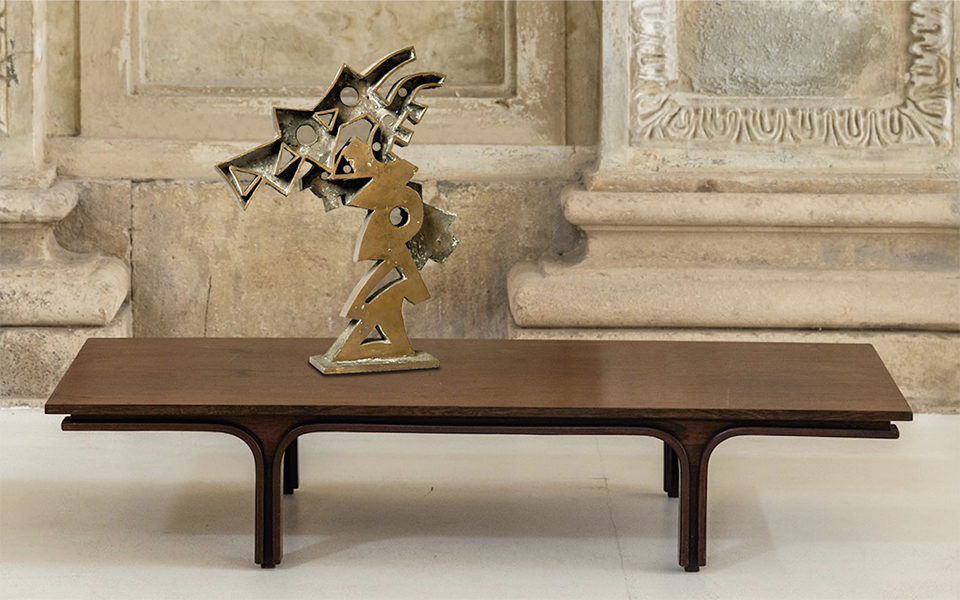
MATERIAL BECOMES LANGUAGE – A dialogue between Umberto Mastroianni e Gianfranco Frattini
On the occasion of Milan Art and Design Weeks, Alessandro Cesati Gallery in collaboration with Volumnia exhibits a selection of sculptures and furniture by two 20th century masters, discovering their elective affinity.
The exhibition ‘Material becomes Language’ explores the dialogue between two great protagonists of Italian art and design of the last century: Umberto Mastroianni and Gianfranco Frattini meet in a fascinating play of forms, telling stories of beauty and innovation.
Since the beginning of the new century, the relationship between visual arts and furniture design has constituted a very fertile, particularly dynamic and multiform phenomenon in which the boundaries between the two spheres appear fluid and jagged, rich in figurative suggestions both in triggering new creative approaches and in identifying unprecedented cultural connections between different design fields. While recognising that Mastroianni and Frattini worked in contexts that were once considered entirely different, today, thanks to a cultural sensitivity more attentive to the practice of contamination, we can trace correspondences in retrospect, based mainly on a multiform and kaleidoscopic ‘doing’, traceable for both of them to true research paths around the resources of materials.
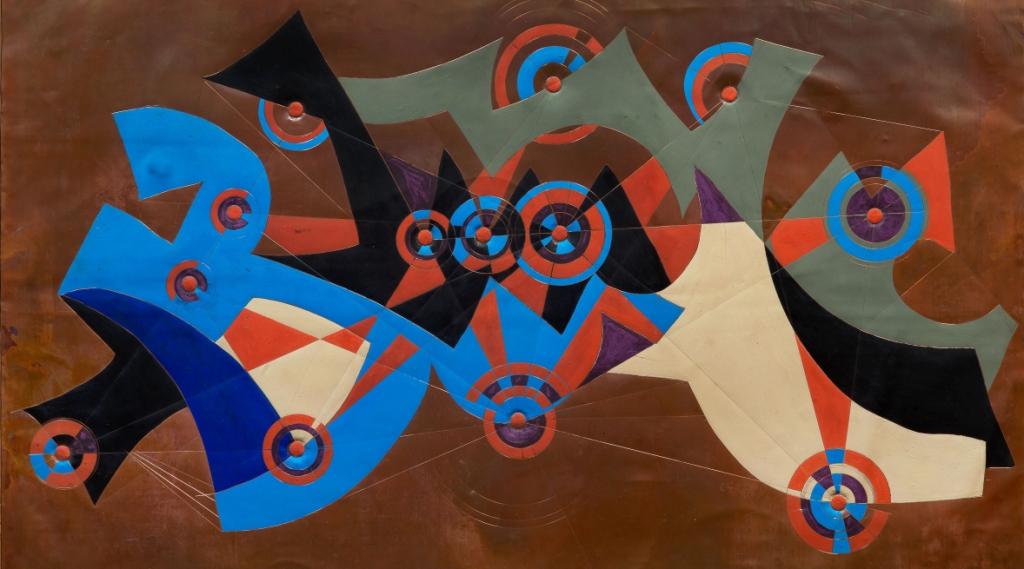
Born near Frosinone in 1910, Umberto Mastroianni made his debut in the classical-figurative field, but only in the 1950s, after an Italian historical phase with little inclination towards artistic innovation, he was able to metabolise and translate into works the inspirations coming from Futurism and important figures of the European avant-garde, such as Delaunay and Picasso and even Kandinsky and Moholy-Nagy, silently absorbed during the previous decades. It was precisely this imprinting that led him to freely and dynamically investigate the DNA of materials and their expressive resources. In his work, the sculptural field finds substantial continuity with that of painting, and among his many ingenious experiences, he ventures, for example, into the working of metal plates (silver, bronze, copper, steel), to which he lends further character through daring brush applications, to the point of revealing great ‘constructive’ complexity. On the strictly sculptural scope, we can divide his production into two distinct strands: on one hand, the large works intended for the public space, which he proudly called ‘monuments’, characterised by a centrifugal layout and capable of entertaining an energetic relationship with the urban surroundings; on the other hand, the smaller sculptures, such as those in this exhibition, nearly always in bronze, characterised by a ‘flattened’ layout, as if inviting the observer to a frontal perception and to grasp the dynamic expansion along the outline. Conceived for the art market, according to Mastroianni, these would have contributed to a semantic enrichment of the domestic landscape, beyond any self-expressive intent.
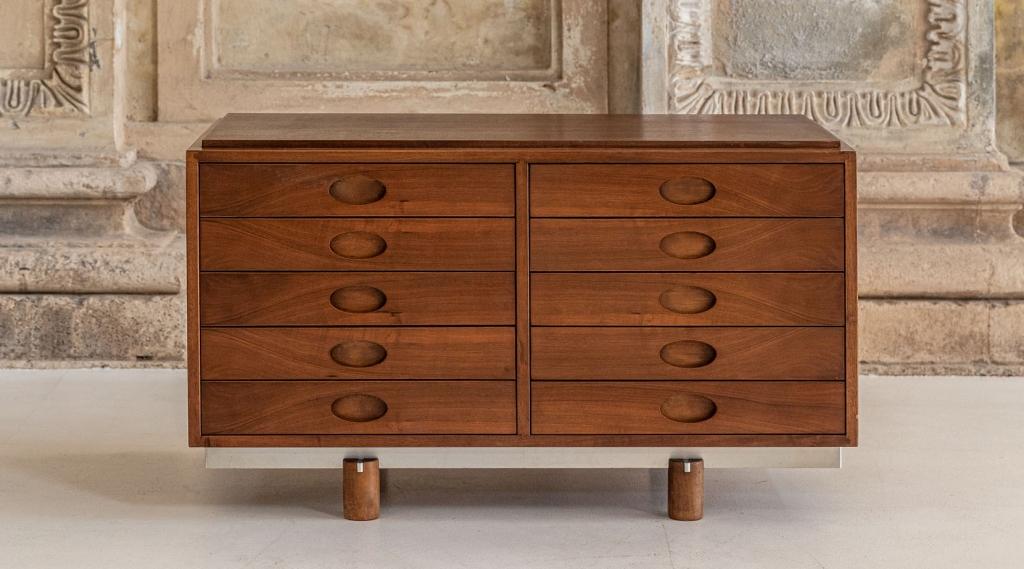
This is also the approach of Gianfranco Frattini, born in Padua in 1926, one of the protagonists of the cultured and sensitive professionalism characterising the Milanese post-war scene. It was in the Lombard capital that he found the opportunity to meet the firms of the rising Made in Italy, starting up fruitful collaborations with them, and with a middle-class attentive to the changes in taste but also to the intrinsic quality of the products. Frattini began his profession at a time when the furniture industry was still permeated by craftsmanship: for this reason, as was the case in the same years for Mastroianni, research on materials cannot but represent the core of his creations, from the precious woods of the 1950s to the chrome-plated steel that came back into fashion in the following decades under the stylistic influences of the Space Age. The sensual beauty of walnut and jacaranda woods is the protagonist of the furniture on display in the exhibition, which marks a transition from the handcrafted dimension to the logic of industrialised furniture.
The paths of the two artists, almost contemporaries, cross for the first time on this exhibition occasion, which highlights how the common and essential trait of both experiences lies in the skilful handling of ‘quality’ material. The homogeneity between the two figures of Umberto Mastroianni and Gianfranco Frattini does not derive so much from a formal similarity, but rather from a subtle, refined compatibility, the result of a common koinè and the same attitude towards the matter of invention. Both these authors have expressed and still express a sort of tempered Modernism, the fruit of rapidly changing times, but also far removed from mannerist radicalism.
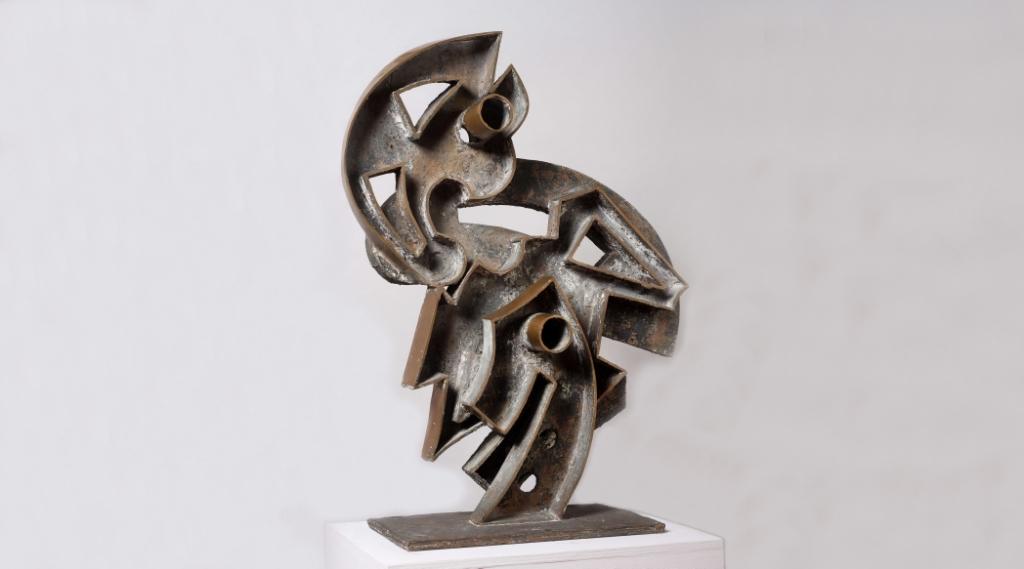
The exhibition is the brainchild of the Alessandro Cesati gallery – specialised for several decades in sculpture and works d’art from the Middle Ages to the 20th century – which has always attached fundamental importance to the study of materials as a favoured field of investigation for the selection of works. With a well-established family heritage in the arts and music, the gallery founded by Fiorenzo and Alessandro Cesati is renowned nationally and internationally for its careful selection of works of quality, rarity and curiosities, distinguishing itself in particular from the biginning for a strong and marked predilection for metal work such as iron, bronze, copper and brass, together with an intense and passionate research and study activity in the great universe of European sculpture, without geographical or temporal limits.
Volumnia was born from the intuition and vision of Enrica De Micheli, a gallery owner with 20 years’ experience in the world of antiques and design. Inaugurated in October 2018 inside the Church of Sant’Agostino, Volumnia has become a meeting place between art, culture and social life. Thanks to the restoration that brought back the Renaissance layout of the Basilica, Volumnia’s design has made this space a unique experience for the visitor, immersed in the beauty and historicity of the environment. Enrica, with her continuous research in historical and contemporary design, has made Volumnia a reference point for sophisticated investigation in the world of furniture.
From 5 to 26 April, on the occasion of Milan Art Week and Fuorisalone – unmissable appointments for lovers and connoisseurs of art and design – the Alessandro Cesati Gallery and Volumnia join forces to create an event celebrating the encounter between sculpture and design. The exhibition ‘Material becomes Language’ puts in evidence the junction point between different artistic languages that, although starting from different contexts, meet in a timeless dialogue.
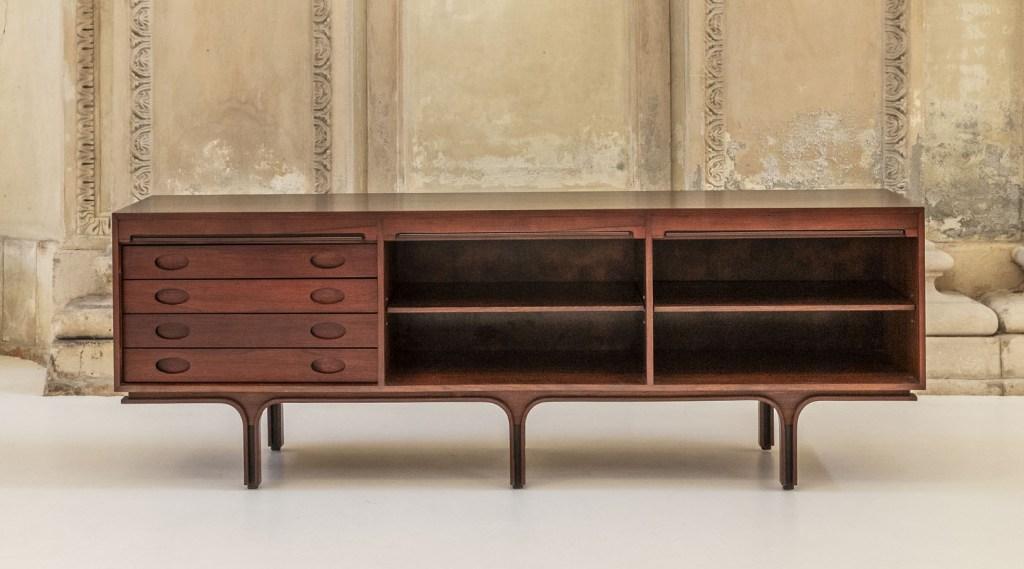
MATERIAL BECOMES LANGUAGE – A dialogue between Umberto Mastroianni e Gianfranco Frattini
April 5 -26 2025
10 – 19
Vernissage April 4th, 15 – 21
Via San Giovanni sul Muro 3, 20121 Milano
+ 39 02 86460928
www.cesatiecesati.com
info@cesatiecesati.com
For more information visit milanoartweek.it
For more information visit Fuorisalone.it
© 2013 – 2024 cesatiecesati.com | Please do not reproduce without our expressed written consent
Alessandro Cesati, Via San Giovanni sul Muro, 3 – 20121 Milano – P.IVA: IT06833070151